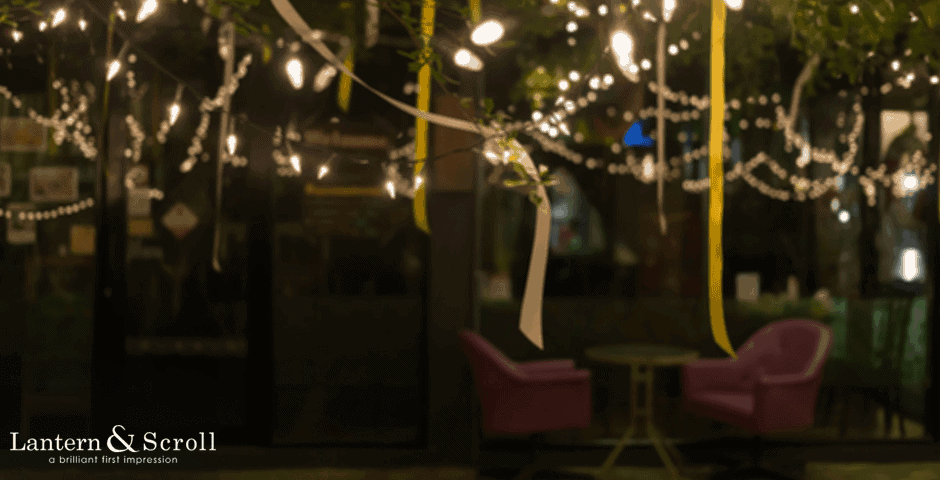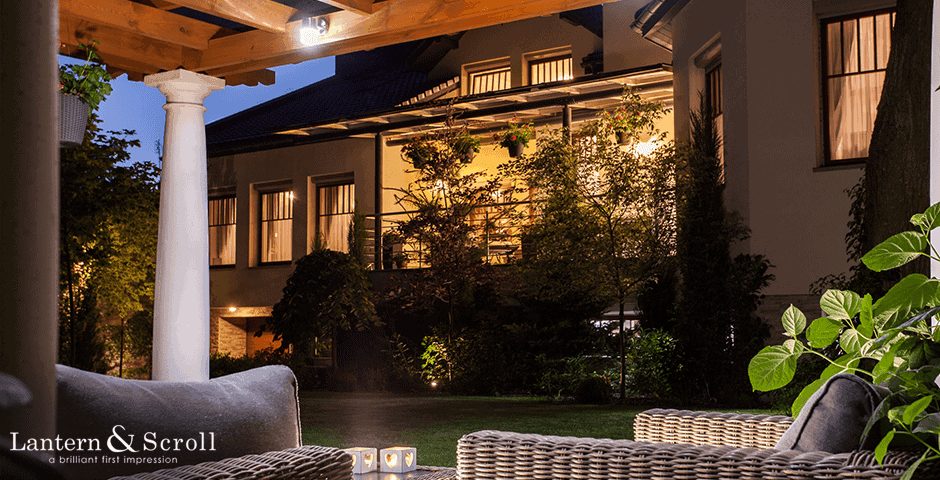As the oldest and largest city in South Carolina, Charleston has many points of interest that harken back to its early days as a commercial port. Vendue Range, a street that now leads to a waterfront park with a beautiful fountain, was once a thriving center populated with shoppers who flocked to booths marked by colorful awnings. Its rich place in Charleston’s past is today recalled by the outdoor copper lighting featured in Lantern & Scroll’s Vendue Inn Collection.
Early History Of The East End Of Queen Street
According to Nic Butler, writing for the Charleston Time Machine published by the Charleston Public Library, Vendue Range, part of property owned by Prioleau family, started out as a muddy throughfare at the east end of Queen Street. It was created when the western part of a small inlet was filled in to create a mudflat prone to being underwater during high tide. There were wharves on the north and south sides of the mud flat; by 1770, it became the site of a fish market and local fisherman dropped off their catches at a small shed the city funded at the east end of Queen Street.
By 1787, the city negotiated with the Prioleaus to allow part of the area to be used for a vegetable market and a slip for a ferry that connected the city with what is now Mt. Pleasant on the east side of the Cooper River. When newly-elected first president George Washington visited the city in 1787 via ferry, he was met with hoards of spectators and then got his first view of Charleston by walking through the dusty field that housed the fish and vegetable markets.
In addition to the fish and vegetable markets, Charleston also had a separate market for the sale of beef. The location changed over the years, but in 1797, the city negotiated with the Prioleaus for more land on the east end of Queen Street to construct a brick market shed for beef sales. Other sales location closed, making the site the only public market place in the city until 1807. At that time, commercial activities moved to a new location on market Street and sheds were torn down. To raise the elevation of the former the mud flat, the city brought in cords of wood to create a 72′ wide thoroughfare that became the site of new buildings on the waterfront that were used for a new type of sales called vendue sales.
The Rise Of Vendue Sales
The origin of the term was from an old English words meaning “auction” or “public outcry.” In contrast to retail sales open to the public where customers interacted with vendors for a set price, vendue sales were auctions for items that range from real estate to slaves In addition. auctioneers or vendue masters held flea markets or estate sales where the highest bidder took home the goods. The Prioleau family partnered with the city to construct a clustered home for vendue sales and re-landscape the area. As vendue sales expanded, newspapers started running advertisements sales on the new Vendue Range at the end of Queen Street, so the shopping area at last had a name.
Shop owners added fabric awnings, but in the absence of any rules to standardize them, the shopping area became an obstacle course where pedestrians and traffic vied for space. In 1817, the city commissioner’s solution was to add posts to cordon off a center strip for traffic from sidewalks covered by awnings for vendue sales. By the 1820’s, when other parts of the city were paved with stones, there was a campaign to pave Vendue Range, but newspapers of the day alluded to the poor condition of the street. It colorfully reported by a correspondent of the Charleston Courier in 1829: “If any man wants a pair of broken shins, I would advise him to walk down the North side of Vendue Range, on a dark night—and if he don’t get a pair, I will agree to break them for him for nothing.”
With the arrival of larger steamships to Charleson’s wharves, the mudflat was filled up and wharves extended to receive vessels and passengers. The former shopping area became the home of the Clyde Steamship line. By the mid-20th century, passenger traffic no longer came to the Vendue Range, the old terminal building burned, and the area further deteriorated until the area was revitalized in the late 1970s.
New Life For Vendue Range
When Charleston Mayor Joseph P. Riley, Jr. came into office in 1975, he envisioned creating a park on land that included the old Vendue Range. The project took nearly 15 years of planning, land acquisition, funding, environment studies, and $1 million devastation from Hurricane Hugo to complete, but it officially opened in May 1990. The award-wining design by Stuart O. Dawson of Sasaki Associates with assistance from Edward Pinckney Associates uses the refurbished Vendue Range as the entrance to the Pineapple Fountain at the end of the park which anchors the park.
The park, renamed Riley Waterfront Park for the mayor in 2015, is divided into two sections, one that includes an urban park shaded by oak trees and replete with benches, while the area adjectent to the riverfront is and open lawn delineated with palmetto trees. Visitors can walk along the curve of the riverfront and even view the pier made from 17th century granite fished out of the river and observe charred pilings from the old wharf. They will marvel at historic homes once owned by naval officers from the Charleston Naval Base that once stood on part of the land acquired for the park may even stay in the luxury hotels and condo now along the Vendue Range.
Outdoor Copper Lighting In Historic Charleston
As the history of the Vendue Range began in the 1700s, the outdoor illumination began with lanterns powered by candles, but gas lanterns became the signature lighting for this street and most of Charleston. Inspired by an old gas lantern that remain on the street, gas lanterns light the street, park, and walkways. By design, however, lighting in the park is sparse, so that visitors can easily see the stars.
Lantern & Scroll, creator of fine gas and electric copper outdoor lighting, offers handmade lanterns in style prevalent in Charleston. Its Vendue Inn Collection pays homage to the old Vendue Inn at 19 and 24 Vendue Range, which was transformed into the modern Vendue, a boutique hotel that caters to the arts and serves the burgeoning tourist trade..



